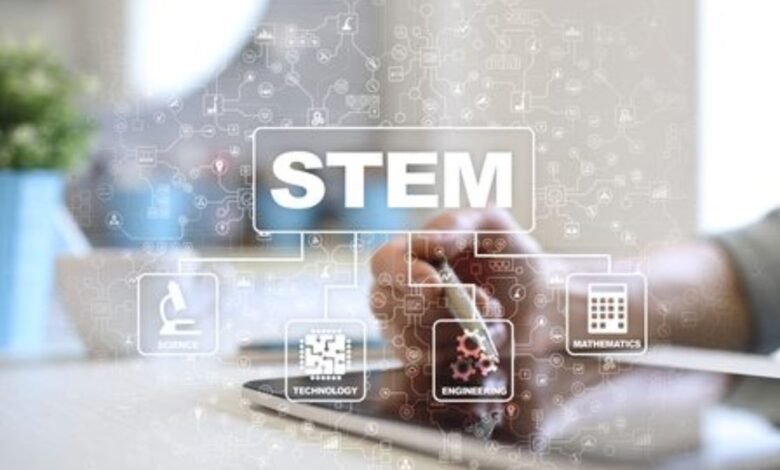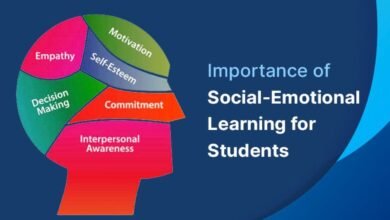The Future of STEM Education: Trends and Challenges

STEM (Science, Technology, Engineering, and Mathematics) education has long been a cornerstone of academic excellence and innovation. As the world evolves rapidly, so too does the landscape of STEM education. To ensure students are prepared for a future characterized by technological advancements and complex global challenges, STEM education must adapt to new trends and overcome persistent challenges. This article explores the future of STEM education, highlighting emerging trends and addressing the significant challenges that educators, students, and policymakers will face in the coming years.
Emerging Trends in STEM Education
Integration of Artificial Intelligence and Machine Learning
One of the most transformative trends in STEM education is the integration of artificial intelligence (AI) and machine learning into curricula. These technologies are no longer confined to the realms of research and industry; they are becoming integral parts of everyday life. Educators are increasingly incorporating AI and machine learning into their teaching methodologies to give students hands-on experience with these advanced technologies. By learning about algorithms, data analysis, and neural networks, students can develop skills that are highly sought after in the job market.
For example, AI-powered educational tools can provide personalized learning experiences, adapting to each student’s needs and pace. Machine learning algorithms can analyze student performance data to identify areas where individuals may need additional support. This personalization not only enhances learning outcomes but also prepares students for careers in fields where AI and machine learning are prevalent.
Emphasis on Interdisciplinary Learning
Another significant trend is the emphasis on interdisciplinary learning. The complexity of modern problems requires solutions that span multiple disciplines. As a result, STEM education is increasingly focusing on integrating knowledge across science, technology, engineering, and mathematics. This approach encourages students to apply their skills in a holistic manner, fostering creativity and innovation.
For instance, a project might require students to use mathematical modeling to design a sustainable energy solution, incorporating principles from engineering, environmental science, and technology. Interdisciplinary learning helps students understand the interconnectedness of various fields and prepares them for real-world challenges that require a multifaceted approach.
Growth of Online and Remote Learning
The COVID-19 pandemic accelerated the adoption of online and remote learning, and this trend continues to influence STEM education. Online platforms offer students access to a wealth of resources and courses that were previously unavailable. Virtual laboratories, simulations, and interactive learning environments are now accessible from anywhere in the world.
Remote learning also enables collaboration across geographical boundaries. Students from different countries can work together on projects, share insights, and learn from diverse perspectives. This global connectivity enhances the learning experience and prepares students for a workforce that increasingly operates on an international scale.
Focus on Soft Skills Development
While technical skills are crucial in STEM fields, there is a growing recognition of the importance of soft skills such as communication, teamwork, and problem-solving. Employers are seeking candidates who can not only perform technical tasks but also collaborate effectively and navigate complex work environments.
STEM education is beginning to incorporate soft skills training into its programs. Group projects, presentations, and interdisciplinary activities are designed to develop these essential skills. By fostering both technical and soft skills, STEM education aims to produce well-rounded individuals who can thrive in various professional settings.
Challenges Facing the Future of STEM Education
Addressing the Gender Gap
Despite significant progress, gender disparities persist in STEM fields. Women and other underrepresented groups continue to face challenges in accessing and succeeding in STEM education and careers. Efforts to address these disparities include targeted outreach programs, mentorship opportunities, and curricula designed to engage a diverse range of students.
However, overcoming the gender gap requires systemic changes. Educational institutions, policymakers, and industry leaders must work together to create inclusive environments that support and encourage participation from all demographics. Providing role models, fostering a supportive community, and addressing unconscious biases are critical steps in promoting gender equity in STEM education.
Ensuring Access to Quality Resources
Access to quality resources remains a significant challenge in STEM education. Schools and institutions in underfunded areas often lack the necessary tools, technology, and infrastructure to provide a robust STEM education. This disparity can hinder students’ ability to engage with and excel in STEM subjects.
Efforts to bridge this gap include government funding, partnerships with tech companies, and community initiatives aimed at providing resources and support to underserved schools. Ensuring that all students have access to high-quality STEM education is essential for fostering a diverse and talented future workforce.
Adapting to Rapid Technological Change
The rapid pace of technological advancement poses a challenge for STEM education. Curricula and teaching methods must continuously evolve to keep up with new developments in technology. This requires ongoing professional development for educators and a commitment to integrating emerging technologies into the classroom.
Educational institutions must remain agile and responsive to changes in the technological landscape. Collaboration with industry experts, incorporation of real-world projects, and investment in up-to-date resources are essential strategies for keeping STEM education relevant and effective.
Balancing Standardized Testing with Creativity
Standardized testing remains a prevalent aspect of education, but it often emphasizes rote memorization over creativity and problem-solving. In STEM education, this can limit students’ opportunities to explore innovative solutions and think critically about complex problems.
To address this challenge, educators are increasingly incorporating project-based assessments, open-ended questions, and hands-on activities that encourage creative thinking. Balancing standardized testing with opportunities for creative expression is crucial for developing students’ full potential in STEM fields.
Conclusion
The future of STEM education is shaped by both exciting trends and significant challenges. Integration of AI and machine learning, interdisciplinary learning, online education, and soft skills development are driving forces that promise to enhance the quality and relevance of STEM education. However, addressing gender disparities, ensuring access to quality resources, adapting to technological change, and balancing standardized testing with creativity are critical challenges that must be overcome.
By embracing these trends and tackling the challenges head-on, educators, students, and policymakers can work together to create a dynamic and inclusive STEM education landscape. This will not only prepare students for future careers but also equip them with the skills and knowledge needed to address the complex issues facing our world today.



